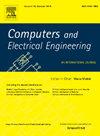Research on fast control of distributed photovoltaic countercurrent based on multidimensional data mining
IF 4
3区 计算机科学
Q1 COMPUTER SCIENCE, HARDWARE & ARCHITECTURE
引用次数: 0
Abstract
To speed up the control of distributed photovoltaic countercurrent prevention, a fast control method of distributed photovoltaic countercurrent prevention based on multidimensional data mining is investigated. This approach uses a multidimensional photovoltaic output power data mining method based on association rule mining. After defining the support and confidence of multi-dimensional photovoltaic output power data mining, an FP (Frequent Pattern) tree is constructed on the basis of Apriori algorithm to generate frequent itemsets. Partial redundant nodes of frequent itemset association rules are eliminated through pruning, and the final reserved node data serve as the result of multidimensional photovoltaic output power data mining. Combined with the multi-dimensional photovoltaic output power data mined, the anti-reverse current cont rol action is rapidly started by the anti reverse current control method based on the anti reverse current safety automatic control device, combined with the difference between the photovoltaic output power data and the fixed value status. Experimental testing demonstrates that this method requires no >1.5 s to control the counter current of the distributed photovoltaic system, exhibiting efficient countercurrent control capabilities for distributed photovoltaic systems.
求助全文
约1分钟内获得全文
求助全文
来源期刊

Computers & Electrical Engineering
工程技术-工程:电子与电气
CiteScore
9.20
自引率
7.00%
发文量
661
审稿时长
47 days
期刊介绍:
The impact of computers has nowhere been more revolutionary than in electrical engineering. The design, analysis, and operation of electrical and electronic systems are now dominated by computers, a transformation that has been motivated by the natural ease of interface between computers and electrical systems, and the promise of spectacular improvements in speed and efficiency.
Published since 1973, Computers & Electrical Engineering provides rapid publication of topical research into the integration of computer technology and computational techniques with electrical and electronic systems. The journal publishes papers featuring novel implementations of computers and computational techniques in areas like signal and image processing, high-performance computing, parallel processing, and communications. Special attention will be paid to papers describing innovative architectures, algorithms, and software tools.
 求助内容:
求助内容: 应助结果提醒方式:
应助结果提醒方式:


